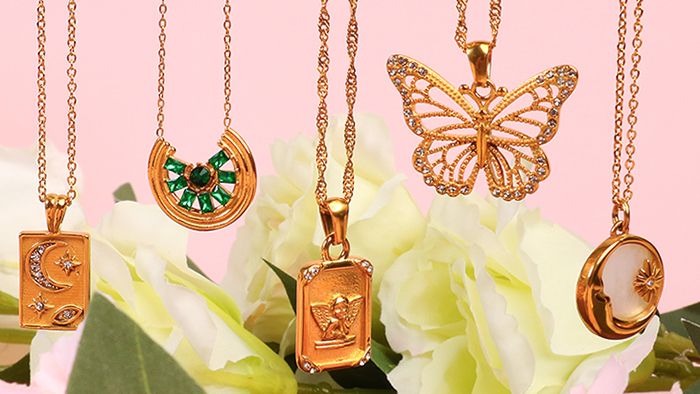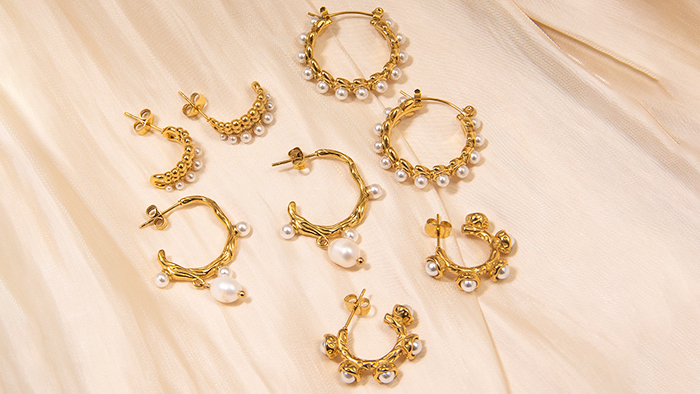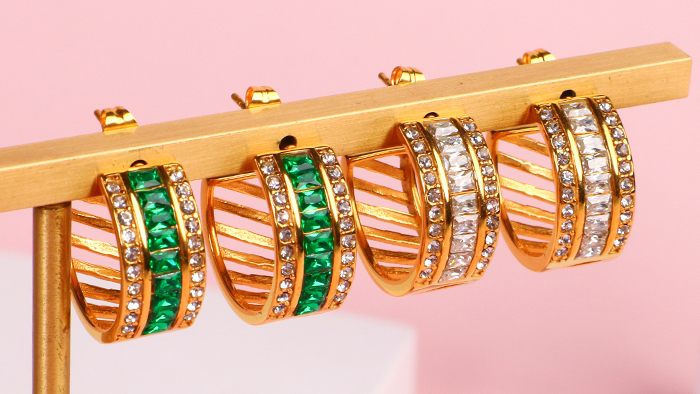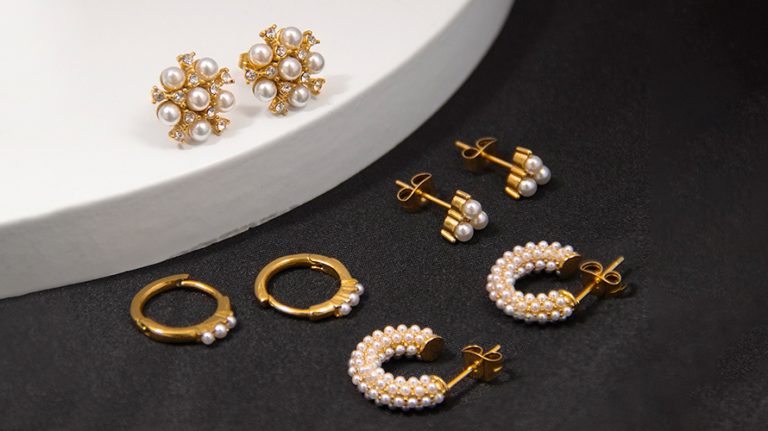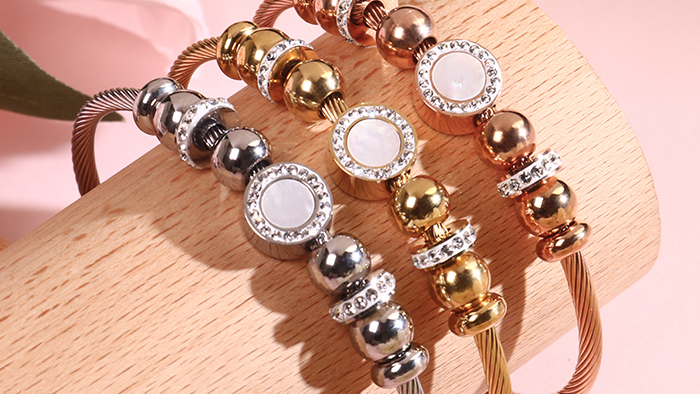What is production process of stainless steel jewelry rings?
The production of stainless steel jewelry rings involves a meticulous and multi-step process that transforms raw materials into exquisite accessories. Stainless steel, known for its durability and corrosion resistance, has become a popular choice for crafting rings that blend style with resilience. In this detailed exploration, we uncover the intricate production process of stainless steel jewelry rings, from the initial stages to the final finishing touches.
Material Selection:The journey begins with the careful selection of raw materials. Stainless steel used in jewelry production is typically an alloy containing iron, chromium, nickel, and other elements. The grade commonly used for jewelry, including rings, is 316L stainless steel, appreciated for its corrosion resistance and hypoallergenic properties. The raw materials must meet stringent quality standards to ensure the final product’s durability and safety for wearers.
Smelting and Casting:Once the raw materials are selected, the next step is smelting and casting. The stainless steel alloy is melted in a furnace at high temperatures. The molten metal is then cast into molds to create the desired shape for the rings. This initial casting sets the foundation for the ring’s design, size, and overall structure.
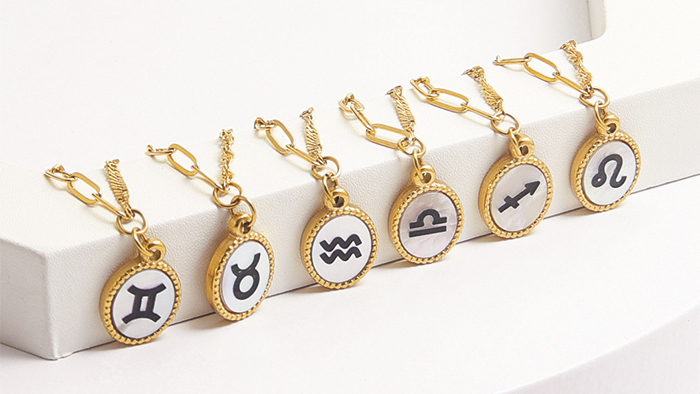
Forging and Forming:After the initial casting, the rings undergo forging and forming processes. This involves manipulating the semi-finished rings using specialized machinery to achieve the desired shape and dimensions. Forging enhances the strength and density of the metal, contributing to the durability of the final product. Different forming techniques may be employed to create specific features or designs on the ring.
Cutting and Shaping:Precision is crucial in the production of stainless steel jewelry rings. Cutting and shaping processes refine the forged rings into their final form. Computer numerical control (CNC) machines or laser cutting technology may be utilized to ensure accuracy and consistency in creating intricate designs or patterns on the surface of the rings. This stage allows for customization and detailing according to the desired aesthetic.
Heat Treatment:Heat treatment is a critical step to optimize the mechanical properties of the stainless steel rings. The stainless steel jewelry rings are subjected to controlled heating and cooling processes to achieve specific hardness, strength, and resistance characteristics. This step enhances the overall performance of the rings, making them more resistant to wear, scratches, and other environmental factors.
Surface Finishing:The surface finishing process is where the aesthetic appeal of the stainless steel jewelry rings is refined. Common surface finishes include polishing, brushing, or sandblasting, each providing a distinct texture and appearance. Polishing, for instance, results in a shiny and smooth surface, while brushing creates a matte or satin finish. This step contributes to the final visual appeal of the rings, ensuring they meet the desired design specifications.
Plating (Optional):
While stainless steel is known for its corrosion resistance, some jewelry rings may undergo an additional plating process to introduce different colors or finishes. Common plating options include gold, rose gold, black, or other coatings that enhance the ring’s appearance. This step is optional and depends on the desired style and design preferences of the manufacturer and consumers.
Stone Setting (If Applicable):
For rings featuring gemstones or other embellishments, a stone-setting process is incorporated. Skilled craftsmen carefully set the stones into the ring using techniques such as prong setting, bezel setting, or channel setting. This requires precision to secure the stones firmly in place while ensuring they align perfectly with the ring’s design.
Quality Control:
Quality control is an integral part of the production process. Each stainless steel jewelry ring undergoes thorough inspection to ensure it meets the specified standards. This includes checking for dimensional accuracy, surface finish quality, stone alignment (if applicable), and overall craftsmanship. Rings that pass the quality control measures proceed to the final stages of production.Powell’s stainless steel jewelry, all are 18k gold PVD plated, waterproof and non-tarnish.They have guaranteed quality, our own professional QC team 100% inspection before shipment!
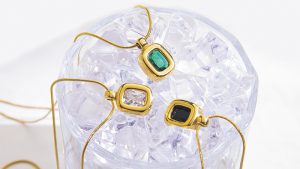 Packaging and Distribution:
Packaging and Distribution:
The last phase involves packaging the finished stainless steel jewelry rings for distribution. Rings are carefully packed to prevent scratches or damage during transportation. The packaging may include branding, care instructions, and other relevant information. The rings are then distributed to retailers or directly to consumers, ready to adorn the fingers of individuals seeking durable and stylish accessories.
The production process of stainless steel jewelry rings is a blend of science, craftsmanship, and artistry. From the selection of high-quality materials to the final packaging, each step contributes to the creation of rings that marry durability with aesthetic appeal. As consumers continue to appreciate the unique attributes of stainless steel jewelry, manufacturers strive to perfect their production processes, ensuring that each ring meets the standards of quality and style expected in the dynamic world of fashion accessories.

